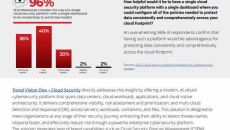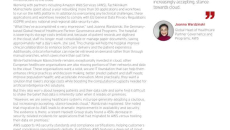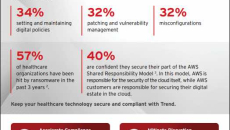Cloud Computing
SPONSORED
Cybersecurity Insiders research shows that 96% of professionals say having a single cloud security platform with a single dashboard would help them protect data consistently and comprehensively across their environments.
SPONSORED
European healthcare organizations are increasingly interested in migrating to the cloud to provide patients easier access to records and lower storage costs. However, healthcare leaders worry about data security in the cloud and investing due to budget and talent constraints. Learn how Amazon Web Services (AWS) and Trend Micro™ are working with HCOs to offer platforms and solutions that protect cloud assets while maintaining compliance with regulations.
SPONSORED
A Trend Micro™ study found that 32% of healthcare IT and business leader respondents are concerned with patching and vulnerability management in their cloud workloads. Trend Micro solutions work within AWS environments to give IT teams control over sensitive data and assets, as well as compliance automation that helps AWS customers stay current with regulations and secure their digital estate in the cloud.
Cybersecurity In Focus
Even as the number of impacted individuals has been again revised upward, industry leaders say there are silver-lining lessons to learn from the incident about security frameworks, third-party risk and basic cyber hygiene.
Miquel-Angel Garcia of Olympus Corporation's Endoscopy Solutions Division explains the aim and focus on alleviating clinicians' administrative and cognitive burden while also prioritizing resource efficiency at uncompromised quality of patient care.
SPONSORED
Building a strong, clearly defined plan can help ensure a successful AI deployment.
South Korea's biggest hospital reportedly saved $1.4 million in operational costs after consolidating and virtualising its IT servers.
He discusses the particular cybersecurity challenges for post-acute care settings, and previews a HIMSS25 session that will help IT leaders at nursing homes, home health and assisted living groups can improve their privacy and security postures.
Healthcare providers and IT vendors in the region have weighed in with their predictions for healthcare technology in the new year.








